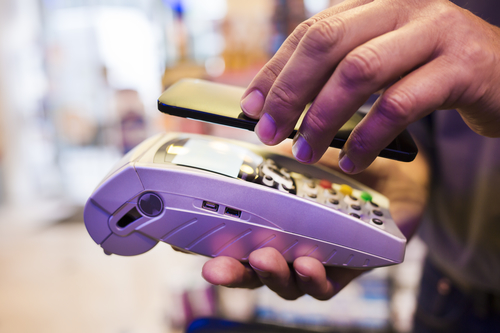Many experts in the mobile payments industry have found out that the various challenges that are bound to be faced are related to front-end consumer experiences of cross-platform checkout solutions and biometrics solutions that are available in the market. These are also considered as key drivers that will influence how payments will evolve, especially on a mobile platform. Read on to find out more on the challenges each area may face.
Cross-platform mobile payment solutions
Apple Pay was launched in the fall of 2014 and remains a pilot in the United States. However, the solution is based on Apple devices only and is lacking worldwide availability. Samsung has also launched its own solution to challenge Apple Pay and currently owns 65% market share, followed by PayPal or Google wallet solutions and Visa Checkout. As observed currently, there will be a huge battle within this mobile payments sphere to convince consumers to share their card details with different providers and accept either payments platform. Current research up till now is still insufficient to prove or conclude the mobile payments trust and acceptance rate of consumers.
Biometrics
You might already notice by now that one of Apple’s biggest initiatives in the mobile payments ecosystem is the launching and integration of biometrics in their products and in the form of recognizing fingerprints. This has been cited as one of the first real solutions in the mobile payments industry to use biometrics on a larger scale, both in-store and in-app. When used in-app, it is a great solution as it helps enhance security and allows consumers to stay within a single app and not be re-directed to a different browser.
While authorizing payments with one’s fingerprint is a good solution, it’s still not that innovative as you’ve been seeing it since the launch of the iPhone 5s. It seems that the ways on how biometrics can be used still has plenty of room for improvement if it’s needed to distinguish itself from other initiatives such as Alipay’s facial recognition and voice recognition.
One-touch payments during mobile checkouts
It is widely agreed that a mobile payments experience is both comfortable and seamless. Today, many consumers do not want to fill in too many personal details and easy-to-use or one-touch solutions like scanning one’s card in a store are much more favored. With this, consumers only need to put an item that they like into their online shopping basket, press check-out, make the payment and they are done. Uber offers a no-touch experience on mobile phones and it is currently one of the best experiences consumers can get.
That being said, one of the major challenges of enabling different payments in a single app is storing credit card numbers. Reason being that the payment function has to adhere to security standards set by the card schemes. Tokenization is a highly discussed topic and it is utilized for recurring transactions on a website. Looking on a broader scale, one tokenization platform is needed for various kinds of e-commerce shops and a central database is required to achieve a safe mobile payments experience.
